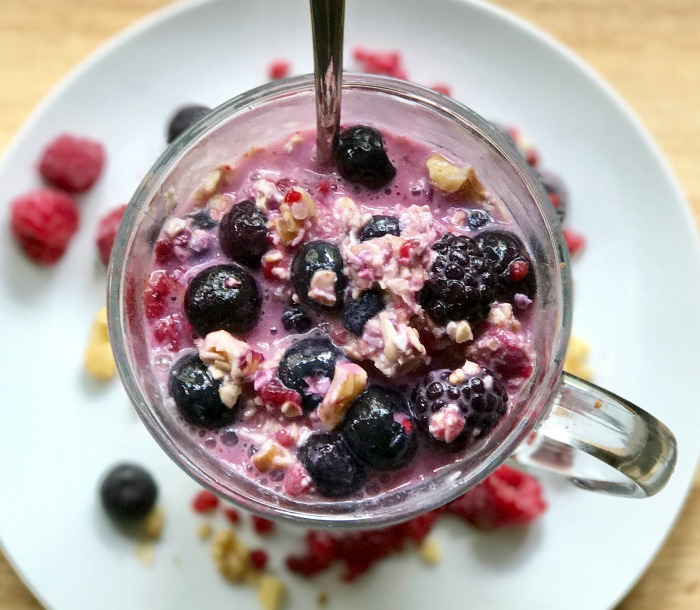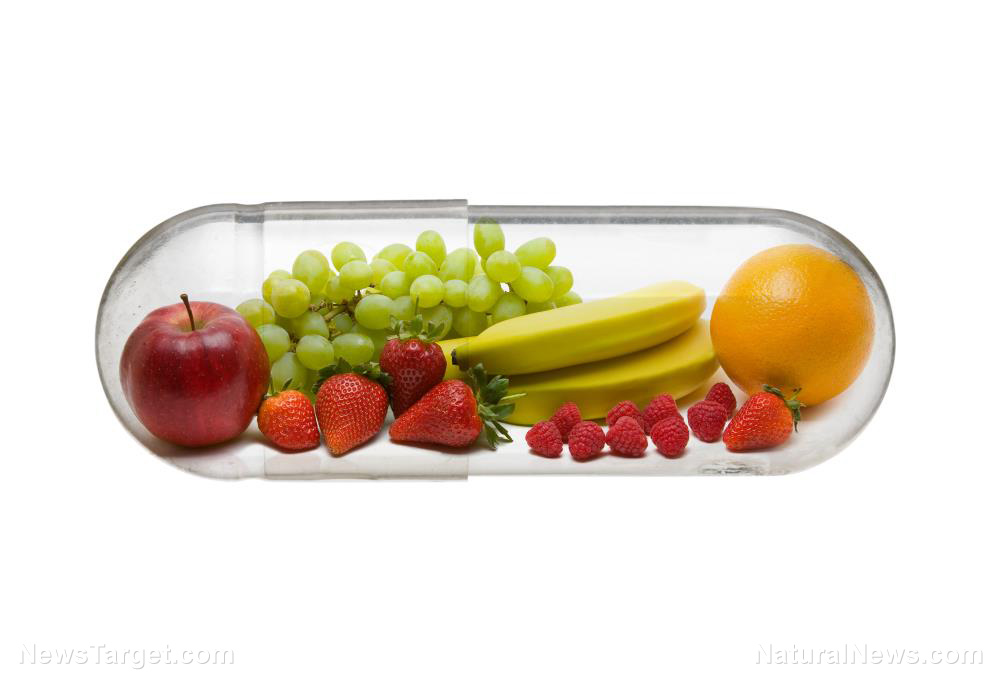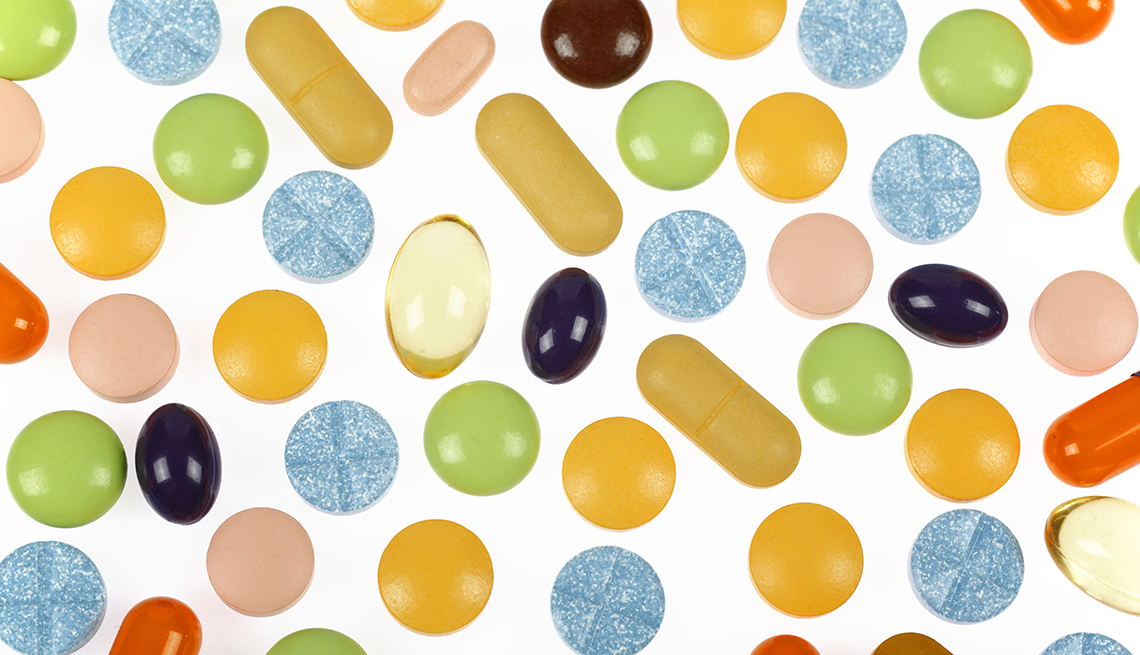Nature Knows and Psionic Success
God provides
Best BJJ Recovery Supplements

As much as they call it the gentle art – BJJ is a tough game. Two athletes battle it out with brain and brawn with the sole intention of dominating the other. It’s all about knowledge, timing, and physical prowess. Your top flight competitors aren’t regular Joe’s who hit the sports hall two or three times a week. No. They’re ripped, muscle-bound, and in peak physical fitness – nothing short of an elite athlete. To sustain their hard training and fighting these men and women need to have their nutrition on lockdown. Their supplement game must be faultless too. BJJ players and competitors take supplements to bulletproof their diet plans. Sometimes things go a-miss, or certain vitamins and minerals are hard to get naturally. Not only that, but certain legal supplements are proven to give their users an edge over their competition. In this article, we’ll look at the four most important supplements for BJJ. Our focus will be to build muscle, strip fat, and maintain a strong, lean body. Not only that, but we’ll also look at how to sharpen the mind and prime it ready for action. Let’s get to it. -If you want to skip.and see our tried and tested best BJJ recovery supplement, scroll down!- Recovery Supplement 1 – CBD Now more than every, athletes are turning to CBD as their go-to supplement. Numerous studies have shown it to be a valuable asset to athletes, due to both it’s mental and physical soothing qualities. CBD is a cannabinoid taken directly from the cannabis plant. However, unlike THC, it has no psychoactive effect, meaning users can experience it’s many pros without feeling a “high”. This is why it’s a real favorite among hard working athletes and recreational jiu jitsu players alike. One of the greatest assets […]
10 Reasons to Eat More Blueberries + My Favorite Healthy Blueberry Smoothie Recipe!

Blueberries are packed with brain-boosting antioxidants that we all know of, but there are many more reasons to eat them every single day! Here are 10 reasons to eat more blueberries that you might not know, plus my favorite healthy blueberry smoothie recipe! Blueberries are one of my favorite fruits and always have been. I grew up eating them in sweet desserts, which isn’t the method I recommend today! I now enjoy them in many ways, from smoothies to oatmeal to healthy fruit-based desserts and so much more. In fact, I eat at least some form of them every single day! From antioxidant-rich wild blueberries to larger, cultivated blueberries, these fruits come in several different forms and are all worth including in your diet. Most of you probably know that blueberries contain antioxidants that have been shown to improve brain health, but there are more reasons to eat blueberries that you might not know. Check those out below, plus see my favorite healthy blueberry smoothie recipe! 10 Reasons to Eat More Blueberries 1. Blueberries have been shown to support digestive health due to their fiber and protective antioxidants. They contain 4 grams of fiber per cup and are low in sugars which support a healthy digestive system and gut flora we all need to be healthy. Their antioxidants have even been shown to prevent certain types of digestive cancers when eaten in an overall healthy diet. 2. Blueberries’ dark blue and purple colors indicate that they contain a class of antioxidants known as anthocyanins. While you might have heard about these antioxidants supporting brain health, you might not know that they also support healthy skin making them important for natural beauty. Anthocyanins help prevent skin from premature aging and can reduce signs of aging thanks to the way they […]
Vitamins to boost your immune system when you’re stressed

( Natural News ) Stress, in small doses, can improve focus and help people become energetic and alert . Too much of it, however, can hinder productivity and performance. While stress is a natural reaction to short-lived situations that require adjustment or response, it can become dangerous when it interferes with daily life. In fact, chronic stress affects both physical and mental health and is linked to high blood pressure (hypertension), asthma, ulcer, irritable bowel syndrome, headaches, and back pain. (Related: Calm your anxiety and stress with these 10 natural herbs .) Chronic stress also makes people prone to disease and illnesses. During stressful situations, the brain signals the endocrine system to release stress hormones, such as cortisol. While these hormones help a person deal with an emergency, it can also dampen the immune system and prevent white blood cells from fighting infection. To manage stress, some people choose to smoke or drink excessively, but these habits may do more harm than good. Fortunately, getting a full night’s sleep, exercise, meditation, and a diet full of vitamins can be effective in alleviating the symptoms of stress . Vitamins to boost your immunity Vitamins are a readily available way for a person to boost his immune system. These are found in many food sources, which means that it’s easy for a person to meet his required daily intake. Vitamin C Vitamin C, or ascorbic acid, is an essential micronutrient that promotes growth and repair of muscle and tissue . It is a powerful antioxidant that fights harmful molecules called free radicals. Taking vitamin C can decrease the duration and severity of a cold or flu. In a study published in the journal Cochrane Database of Systematic Review , researchers found that an effective dose of 1 to 2 grams is […]
What we learned from creating one of the world’s most popular MOOCs
Abstract Learning How to Learn (LHTL) is currently one of the world’s most popular massive open online course (MOOC), with nearly 2.5 million registered learners in its first 4 years. Here, we “reverse engineer” the design of the course’s videos to show how creative application of well-known principles of multimedia learning in an MOOC context appear to have fueled the course’s popularity. Gaps in knowledge of multimedia learning are also noted. There have been some 50 years of experience researching effective classroom teaching, but less there have been only 5 years since MOOCs became widespread. The success of LHTL may provide further insight into the importance of the principles of multimedia learning, and how those principles might be practically implemented to improve MOOC making and the general design of instructional videos. Introduction Massive open online courses (MOOCs) burst on the scene in 2011 with a major article in the New York Times . 1 The large numbers that enrolled, coupled with the unprecedented reach through the internet, piqued the world’s attention. Just as the internet disrupted the domains of knowledge, commerce, and social networks, it appeared that the world of education was about to change. Almost overnight, new companies were founded to develop and freely distribute lectures online by some of the best educators in the world. These are available on demand anyplace and anytime that there is an internet connection. The latest data available, as of the end of 2018, indicates there are 11,400 extant MOOCs, servicing 101 million learners. 2 Background about the MOOC Learning How to Learn Although many of the most popular MOOCs today involve practical skills such as computer programming or marketing, a few self-help-type courses, such as Yale’s The Science of Well-Being and our own Learning How to Learn (LHTL) make the top […]
Scientists improve rat’s short memory by prolonging brain signals

ARTEM MARFIN/ADOBE STOCK Scientists from the New York University found a way that can improve short-term memory in rats, and the findings may lend a clue to the treatment of memory disorders in humans. The study published on Thursday in the journal Science showed that brain cells fired longer when an animal was learning about a new place, and with those signals artificially lengthened, the animal was found to be better at remembering things, Xinhua News Agency reported. "Our study is the first in our field that made artificial changes to intrinsic neuronal firing patterns in the brain region called the hippocampus that increased the ability to learn," said Gyorgy Buzsaki, a neuroscientist at New York University School of Medicine, who led the study. In the experiments, the researchers alternated the sugary water between the left and right arms of a maze each time when a rat was placed in it, so the rat had to recall which way it had gone on the previous attempt and chose the opposite the next time. The researchers recorded the firing of cells in the hippocampus as a rat performed the memory task in the maze. The cell firing can be reflected by sharp wave ripples captured by a technology called Electroencephalography (EEG) to record brain activity with electrodes. They found that the sharp wave ripples were longer by tens of milliseconds when the rat was placed in a new place instead of a familiar one. Then, they engineered hippocampal cells to include light-sensitive channels, thus adding more working neurons to the naturally occurring sequence of sharp wave ripples. The rats with extended ripples were found to be 10 to 15 percent better at finding a sugary reward than rats without the manipulation, according to the study. The researchers found that extended […]
New dance class at PC begins June 17

Do you want to feel great on the dance floor? Porterville College summer session has the class for learning to dance while gaining health benefits. No dance partner is necessary to enroll. Dance instructor Luis Aguilar is now teaching “Contemporary Ballroom and Line Dancing” through the Continuing Education Department at Porterville College, Monday evenings from 6-8 p.m. in the Student Center Conference Room located inside the PC Cafeteria. Aguilar makes dancing fun and encourages students every step of the way. He explains, “This class is great for beginners, people with both left feet. We will learn simple to complex line dancing as a form of aerobic exercise with breaks of basic ballroom like Salsa, Cha-Cha, Bachata, West and East Coast Swing, Waltz, and Night Club Two Step.” Dancing has been a lifelong hobby for Aguilar. He won a swing dance contest in college and was hooked. In 2000, Luis trained at the Sheryl Burke Studio, of “Dancing with the Stars” fame, in the Bay Area. He received a broad variety of instruction and encountered many expert dancers. As a professional civil engineer, dancing is the perfect hobby for Aguilar, which he feels we all need for health and longevity. “I joined Luis’ dance group eight months ago,” shares new dancer Carla Chancellor, “and I have developed better balance, learned many dances, and gained new friends, while laughing and losing two pants sizes along the way.” Aguilar states, “Dancing provides many health benefits: cardio vascular stamina, greater brain and memory function, better balance, stronger muscles and bones, along with endorphins and mood boosting social interaction.” Many recent medical studies and articles support dance as part of a healthy life style. When a new career position brought Aguilar to Porterville, he found no forum for his dance hobby. Friends in his […]
Scientists improve working memory by extending brain signals

A study led by researchers at the New York University School of Medicine has discovered that short term memory can be improved by artificially extending neuronal signals called sharp wave ripples. The discovery holds potential implications in the future treatment of memory disorders, including Alzheimer’s disease. The researchers focused on short-term memory Sebastian Kaulitzki | Shutterstock The study focused on working memory, which is responsible for retaining temporary information to be used to accomplish a task, for instance, remembering routes and directions around a new place to be used later in the day, or recalling numbers to write down a phone number. The team discovered that by lengthening sharp wave ripples (oscillatory patterns local to the hippocampus and surrounding areas of the brain that are involved in memory consolidation) in rats, they were 10 to 15 percent better able to remember the way through a maze to find a sugar water treat. Sharp wave ripples are created when nerve cells send electrical impulses to organize memories. As the study explains, “Sharp wave ripples (SPW-Rs) in the hippocampus are considered a key mechanism for memory consolidation and action planning.” During the experiment, the route of the maze researchers devised for the rats changed so that rats had to use the opposite route to the route they had previously taken to obtain the reward. To accomplish this, rats had to employ their short-term memory to remember not to repeat the same route in order to find the sugar water. The researchers used multisite electrophysiological recordings with optogenic activation of hippocampal pyramidal neurons, and artificially lengthened the sharp wave ripples to assess how it affected the rats’ short-term memory performance. To extend the sharp wave ripples, hippocampal cells were engineered to include light-sensitive channels. By shining light through small glass fibers successfully […]
Leading neurosurgeon’s simple workouts for your little grey cells

Less than 20 years ago, people thought that running or going regularly to the gym was for fitness freaks. But step outside your front door today and you can barely move for joggers and cyclists, while it’s entirely normal to be a member of a gym. In short, most people understand that their physical wellbeing is largely down to themselves, and that it can be vastly improved if only they choose to do so. But what most don’t realise is that exactly the same is true of their brain fitness, too. Just as our bodies age, so do our brains — with consequences that range from the irritating, such as forgetting why we came into a room, to the terrifying, such as dementia. However, just as with our physical health, there are a range of options available to us to improve our brain health. In fact, the single most important discovery neuroscientists have made since I first became a brain surgeon 15 years ago is that your brain’s health is largely within your own control. The brain has a remarkable ability to heal itself. We already know, for example, that every brain can make a comeback following a devastating illness or injury. Neurosurgeons like myself witness the living proof in patients who’ve experienced strokes, injuries or brain cancer yet who manage to make incredible recoveries. Neuro gym: The pecking order When you’re trying to remember things, use the lesson of the pecking pigeons (see main article) and intentionally practise area-restricted searches. Diligently scour your brain, first for categories and then for items in each category. This easy exercise takes less than five minutes — all you need is a piece of paper and a pencil. Set a timer for two minutes then write down the names of as many […]
Soup-To-Nuts Podcast: Which functional claims in beverage resonate with consumers?

The result is an increasingly competitive landscape with more companies flooding the market with drinks offering a variety of benefits, flavors and even textures in a near infinite number of permutations with the hope that something will catch shoppers’ attention and gain traction. To help even the odds of success, I caught up with Jenny Zegler, an associate director on Mintel’s food and drink platform, at the Institute of Food Technologists’ Annual Summit in New Orleans earlier this month. In this episode of FoodNavigator-USA’s Soup-To-Nuts Podcast, she shares which functions are emerging as winners in the beverage space and which categories are currying consumers’ favor currently. Dan Force, who manages the innovative products division at the ingredient, flavor and blending company Prinova Group also chimes in with what he sees as the next big winners in beverage. Blurring lines are double-edged sword According to Zegler the blurring between beverage categories and between beverage and food is a double-edge sword that brings opportunity, but also significant challenges. “We are starting see more with what we call beverage blurring – just so many different categories answering almost every sing need that consumers want,” she said. From a consumer perspective the trend is “beneficial [because] they get to choose. They get to have fun with what they are doing,” she said. “But from a category or company landscape it is so challenging to try and figure out what do people want, what can we mix, what flavors belong where because consumers just don’t care. They are just looking for something that seems like it tastes good, might be new, might be fun” and what might be “cool.” New, easy-to-use hop essences deliver full aromatic profiles and flavor characteristics of traditional dry hopping, but with increased yield. […]
Foods to Heal Your Brain

By: Cat Ebeling, RN, MSN-PHN, co-author of the best-sellers: The Fat Burning Kitchen , The Top 101 Foods that Fight Aging & The Diabetes Fix Alzheimer’s, depression, anxiety, OCD, bipolar, schizophrenia, behavioral problems, ADD/ADHD—the list goes on and on. Mental health issues are increasing by the day. Pharmaceutical companies make massive amounts of money treating mental health, mood and behavioral disorders. In fact, Americans spend about $188 billion dollars a year on mental health treatments and medications . Of that, $71 billion is on depressive disorders alone. It is estimated that almost 20%, or 1 out of every 5 people in the United States have some form of mental health issue, according to the National Institute on Mental Health (2017). Medical treatments for depression, autism, attention deficit disorder, insomnia, eating disorders, learning disabilities, drug addiction, obsessive-compulsive disorder, anxiety, bipolar, dementia are making pharmaceutical companies billions of dollars! And then there are things like chronic stress, brain fog, anger management, anxiety, mood swings, sleep issues, irritability, and memory loss. Mental health problems are an ‘invisible epidemic’ that affect 1.1 billion people worldwide. Physicians have long held onto the belief that the brain and the body do not affect each other. The common belief was that what we put into our bodies did not change anything in our brain. But that is wrong. We now know, that mood, memory, attention and behavior problems and most other brain diseases have their root cause in the body, especially the gut . Perhaps the conventional medical approach to dealing with brain disorders is totally backwards. Doctors used to speak of the ‘blood/brain’ barrier in terms of medications, toxins, foods etc. The idea was that most of what we ate or drank did not cross that barrier to the brain. Now we know that that […]
Educated People Still At Risk Of Developing Alzheimer’s, Researchers Say

The conventional wisdom is that people who continue their education throughout their lives have a lower risk of developing Alzheimer’s disease. But there are a number of studies out there that contradict this notion, leaving the layman to wonder where the truth lies. Alzheimer’s disease is the most common form of dementia and is primarily characterized by progressive memory loss. It’s been argued that a high level of education is supposed to boost a person’s “cognitive reserve,” which refers to the brain’s ability to preserve and maintain cognitive function despite any damage. Scientists know a high cognitive reserve should act as a safeguard against cognitive impairment that can occur naturally as a person grows old. The question now is if this cognitive reserve bolstered by a higher level of education can really be effective in preventing or slowing down the development of Alzheimer’s disease. Unfortunately, the answer is no. But this conclusion comes with caveats. Diabetic Weight Loss Diet Best Shampoo for Thinning Hair New research has found no link between a person’s cognitive reserve in midlife and a lower risk of developing Alzheimer’s disease. The study published in the Journal of Alzheimer’s Disease that came to this conclusion was conducted by Dr. Rebecca Gottesman, from The Johns Hopkins University School of Medicine in Maryland, and her colleagues. The good news for those with a higher education is the study confirms these people might remain cognitively functional for longer, purely thanks to the fact their high cognitive reserve takes longer to become depleted. "Our data suggest that more education seems to play a role as a form of cognitive reserve that helps people do better at baseline, but it doesn’t affect one’s actual level of decline,” said Gottesman. "This makes studies tricky because someone who has good education may […]
Aging delayed in older mice given blood component from young mice

Credit: CC0 Public Domain New research has identified a novel approach to staving off the detrimental effects of aging, according to a study from Washington University School of Medicine in St. Louis. The study suggests that a protein that is abundant in the blood of young mice plays a vital role in keeping mice healthy. With age, levels of this protein decline in mice and people, while health problems such as insulin resistance, weight gain, cognitive decline and vision loss increase. Supplementing older mice with the protein obtained from younger mice appears to slow this decline in health and extend the life spans of older mice by about 16 percent. The study is published June 13 in the journal Cell Metabolism . The circulating protein is an enzyme called eNAMPT, which is known to orchestrate a key step in the process cells use to make energy. With age, the body’s cells become less and less efficient at producing this fuel—called NAD—which is required to keep the body healthy. Washington University researchers have shown that supplementing eNAMPT in older mice with that of younger mice appears to be one route to boosting NAD fuel production and keeping aging at bay. "We have found a totally new pathway toward healthy aging," said senior author Shin-ichiro Imai, MD, Ph.D., a professor of developmental biology. "That we can take eNAMPT from the blood of young mice and give it to older mice and see that the older mice show marked improvements in health—including increased physical activity and better sleep—is remarkable." Imai has long studied aging, using mice as stand-ins for people. Unlike other studies focused on transfusing whole blood from young mice to old mice, Imai’s group increased levels of a single blood component, eNAMPT, and showed its far-reaching effects, including improved insulin […]
Use These Work Strategies To Dramatically Increase Your Productivity

What do you do daily to be more productive? originally appeared on Quora : the place to gain and share knowledge, empowering people to learn from others and better understand the world . After years of success in Silicon Valley, I suddenly became something of a wreck. I was procrastinating on projects big and small. My focus was floundering. So was my creativity. So my productivity was slowing to a halt. I realized that I had a problem. I’d become addicted to distraction. I was constantly multi-tasking, jumping between different tasks, and responding to every notification like Pavlov’s dog . I would also mindlessly scroll through feeds and reach for my phone even without any reason. To be productive, I would have to build a buffer against the ever evolving onslaught of distractions and self-inflicted FOMO (fear of missing out). I’d have to unlearn bad behaviors. It’s an issue millions of people are facing. In a Udemy survey , nearly two-thirds of workers said they spend about an hour each workday looking at their phones. Among Millennial and Gen Z people surveyed, 74% describe themselves as distracted at work. To overcome this problem, I experimented with different hacks. I found one that has helped me boost my productivity dramatically. Work in sprints It’s impossible to go from being easily distracted to suddenly having complete concentration all day long. You can’t fix this problem cold turkey. Instead, it’s best to take incremental steps that feel relatively painless. (I think of this as attention hacking.) The key is to start off by setting aside blocks of time in which you refuse to give into the temptation to pursue any distraction. Think of it as working in sprints, rather than going for an entire marathon. Harvard Business School recommends “two or three […]
Yoga and Meditation: This is Your Brain on Yoga

WN Lifestyle Home – Health Originally posted on https://theyogastudiosouthlake.com/yoga-and-meditation/ The physical benefits of yoga are undeniable, and many people know that yoga is good for flexibility, posture, strength, weight loss and more…. Originally posted on https://theyogastudiosouthlake.com/yoga-and-meditation/ The physical benefits of yoga are undeniable, and many people know that yoga is good for flexibility , posture, strength, weight loss and more. What many people don’t realize is that yoga is also good for your brain. Yoga is a form of meditation and can be practiced purely mentally or in combination with traditional poses. The practice of yoga promotes relaxation and even beginners report feeling increased mental stability and clarity during and after practice. Everyone feels tension from time to time and many yoga poses are associated with relieving stress and anxiety. Various yoga poses and the practice of meditation can be beneficial to everyone. No matter the source of your stress, the calming nature of practicing yoga can decrease the feelings of stress and anxiety in the mind as well as the body. The stretching of various muscles also helps relax the body and gets rid of muscle tension, which also signals the brain to unwind. The idea that a healthy mind and a healthy body co-exist dates back at least 2,000 years, and the benefits of exercise beyond physical health is not a new idea either. The New England Journal of Medicine said in 1887 “Exercise sustains and improves bodily health [and] may contribute to brain growth and to the symmetrical development of the mental faculties.” An article by Harvard University indicates that practicing yoga can help you combat stress, anxiety and depression. For many people yoga may be a relatively low-risk, high-yield approach to managing symptoms. The scientific study of yoga demonstrates that mental and physical health are […]
5 Super Fruits of Summer

Where fruit is concerned, summertime is practically an embarrassment of riches. With so much produce hitting its peak in the summer months, fruit is everywhere– and it’s affordable. You can’t go wrong with whatever kind you pick, but these five stand out from the crowd: Strawberries This berry ranks in the top ten for antioxidant capacity—that’s a measure of how well the compounds can destroy cell-damaging free radicals. One of those antioxidants is immune-boosting vitamin C, and one cup of strawberry slices has more than you need in a day. Some of the berry’s other natural plant chemicals are being studied for helping fight inflammation, certain kinds of cancers, and your risk for diabetes. Cherries Along with three grams of fiber per cup, sweet cherries contain potassium and a little bit of vitamin C. Like all fruits and veggies, the plant chemicals that give it color also offer health benefits. In the case of cherries, those compounds are anthocyanins, which color fruit red, purple, and blue. They work as antioxidants, which guard cells from damage. Another substance in cherries called quercetin may help boost heart health. Raspberries This berry’s claim to fame: It’s one of the highest-fiber fruits around, with a whopping eight grams per cup—that’s about a third of what you need for the whole day (all for just about 60 calories and five grams of natural sugar). They’re notoriously delicate, so eat them within a day or two of buying them, and rinse just before eating. Blueberries Think of these as the “brain berry”. In research, they’ve been associated with less age-related memory decline, lower risk of dementia, and increased concentration. Researcher think the berry’s potent dose of antioxidants, including the anthocyanins that make them blue, may help protect brain cells. Besides fresh blueberries, you can also […]
Opinion: Optimizing testosterone levels affects more than just a man’s sex drive

Testosterone levels often are associated with a man’s sex drive, and only his sex drive. Many men suffer from low testosterone, particularly as they age, but few recognize that it impacts more than just libido and erectile function. Other side effects, according to the American Urological Association, include fatigue, memory loss, depression and mood swings, changes in body composition, difficulty sleeping and reduction in bone density. It even can lead to higher rates of mortality and diabetes. Researchers have confirmed that testosterone levels are dropping across the board by up to 1 percent annually, clear evidence that there’s a problem. With June being Men’s Health Month, it’s an ideal time for men of all ages in Southwest Florida to think about the one hormone that affects us in so many ways. Eduardo Maristany, M.D. (Photo: Submitted) A simple blood test can confirm testosterone levels, and for those with low numbers, urologists often provide treatment through prescription drugs or injections. When prescribing medication, many urologists aren’t looking at the patient as a whole — their course of treatment is isolated to one specific condition or concern, oftentimes erectile dysfunction, and that’s what they treat. For patients with low testosterone, I start with a thorough physical examination and complete a detailed health history analysis. Oftentimes, I suggest additional testing to measure biotoxin markers, glucose metabolism, nutritional deficiencies and more. My goal is to develop a scientifically and genetically complete profile of a patient, which often points to factors that interrupt or inhibit the development of testosterone. Most patients I treat can experience immediate results in their testosterone numbers by making changes to their diet and lifestyle. Here are some natural solutions I often suggest: Diet: Cut out sugar and junk food like french fries, cheeseburgers, potato chips, soda, candy bars and […]
Low-Calorie Chocolate Recipes That Will Satisfy Your Cocoa Cravings

Chocolate cravings can be intense, but depriving yourself can sometimes make things worse. Instead of feeling out of control, try one of the six low-calorie recipes below that won’t wreck your healthy diet. The best part? These cocoa-based recipes are sure to satisfy your tastebuds without leaving you feeling deprived. Video of the Day "Cravings are complex, but most theories focus on two factors: Habit formation and the reward circuitry in our brain," says Samantha Cassetty , RD, nutrition and weight-loss expert. For example, if you always eat chocolate on your birthday or you read about chocolate cravings during your period, you’ll likely form a mental association between those things. While this association can be strong, it’s not impossible to break. "In general, we crave chocolate because it tastes good and makes you feel good," says Jackie Newgent , RDN, culinary nutritionist and author of The All-Natural Diabetes Cookbook . When you eat chocolate, your brain releases "feel good" chemicals called neurotransmitters . "There’s not just one component of chocolate that makes it crave-worthy; it’s everything about it, including sugar, fat, cocoa compounds and mouth-feel," she says. Since the amount of carbohydrates (especially sugar) and fats in today’s packaged foods is way more than what nature originally provided (with the exception of breastmilk), foods with this makeup can signal reward circuitry in our brain that makes these foods more desirable, even if you’re just "meh" about chocolate, Cassety says. Are there real benefits to eating chocolate? Newgent says yes, especially when not transformed into overly sugary candy bar. "A daily, one-ounce piece of bittersweet chocolate can easily fit within most healthy eating plans," she says. And since a higher percentage of cacao (cocoa) generally means a higher amount of flavanols, Newgent’s recommendation is "the bitterer the better," or eating […]
Brain Health and Dietary Supplements: Where’s the Evidence?

Various colorful pills and supplements on white background Effectiveness Is Unproven The Global Council on Brain Health does not recommend any dietary supplement for brain health. Despite a lack of evidence that vitamins and dietary supplements actually boost brain health, large majorities of adults believe that they are at least somewhat effective in maintaining brain health or improving mental sharpness, according to new AARP research, and nearly half feel supplements are at least somewhat effective in reversing dementia. The majority of adults surveyed view vitamins and dietary supplements positively, with 78% saying they are extremely or somewhat important to health, but supplements are more popular among older adults. Three-quarters of respondents in the Silent and Greatest generations (76%) currently take vitamins or dietary supplements, compared with roughly half of Gen Xers (58%), and Millennials and Gen Z (43%). More than one-third of adults in the oldest generations take a supplement with the mistaken belief that it will help maintain or improve brain health or delay or reverse dementia. Though the adults surveyed seem to embrace supplements, AARP found that they do have concerns about effectiveness (46%), safety and purity (44%), thoroughness of government review (40%), and cost (34%). In fact, many adults mistakenly believe that the federal government regulates these products. In reality, the Food and Drug Administration can only challenge their value once they are on the market. Where, then, are adults getting their (mis)information about vitamins and dietary supplements? Those late-night TV commercials spring to mind: A fast-talking voiceover promises this or that exotic supplement will work miracles on whatever ails you. But AARP found that most respondents are getting their information from reputable sources. More than six in ten cited doctors, nutritionists, and pharmacists as their sources, just one in ten cited the media, and even […]
Alzheimer’s disease is influenced by lifestyle choices

Alzheimer’s patients and their families received devastating news earlier this year when one of the most promising drugs, Aducanumab, failed to show a positive outcome. The drug, which had shown early results of cognitive improvement and the ability to get rid of amyloid from the brain, was one of the most hopeful drug prospects we had. The National Institutes of Health has spent billions of dollars on Alzheimer’s research. Between 2002 and 2012, 244 compounds were tested in a total of 413 trials but none of the drugs were found to stop or reverse the progression of Alzheimer’s disease. The reality is that our current therapeutic approach only slows down the process for a short period of time. We learned last week that the drug company Pfizer knew that their drug Enbrel demonstrated a potential 64 percent reduction in Alzheimer’s risk in those using it long-term for arthritis, yet they chose not to pursue further research or to share this information. There was no guarantee that the clinical trial would have shown positive results, but many experts feel it is unethical not to disclose such results, especially when there aren’t any promising pharmaceutical interventions in the pipelines. There is the question if the analysis on the potential return from a drug that was about to go generic played any role in Pfizer’s decision not to pursue the research. The Alzheimer’s Association is hosting "Healthy Living: Pathway to Hope" 8 a.m.-4 p.m. June 20 at the Carrasco Room at Midland College. The conference will focus on healthy lifestyle choices and will offer presentations on physical activity, stress management, nutrition, humor and sleep. The event is free, but registration is required. Lunch will be served. CEUs are available. For more information contact Janet Cross at jcross@alz.org or 570-9191, ext. 8031. Let’s […]
KIPPO Science Launches Global Regenerative Medicine “ATP” Website

HONG KONG, June 12, 2019 /PRNewswire/ — KIPPO Science Limited, a company that supports its range of herbal supplements with scientific proof and research, has officially launched its new website. "My research team have harnessed the power of nature to develop our product range, supporting our claims with in-depth scientific research," explains Yun Jeong-man, CEO of KIPPO Science. The company’s pioneering products improve mitochondrial system recovery by improving a person’s adenosine triphosphate, or ATP, system. This organic compound is a nutrient and energy present in the cells of all living things, that decreases by 1% every year from the age of 25 and by 25% from the age of 50. This decrease in ATP is largely attributed to a weakened immune system and the increase of disease. Headed up by president Yun Jeong-man, KIPPO Science Limited sought to find a way of harnessing natural herbs to stimulate the body to self-generate ATP. In response to the common scepticism from western commentators, doctors and pharmaceutical companies, KIPPO Science Limited supports product claims with scientific research. The company’s range of ATP stimulants can address many of the leading health concerns, even minimizing risks such as memory loss, and reducing risk from heart and brain function issues. Research has also shown users to gain a natural immunity and energy boost when taking the supplement. "My research team have harnessed the power of nature to develop our product range, supporting our claims with in-depth scientific research," explains Yun Jeong-man, CEO of KIPPO Science. "We found that age alone is not what causes disease, but the increased oxidation that occurs with the loss of natural ATP production. In a similar way to how an electric car stops when there is no longer electricity, the human heart cannot power without ATP." "For this reason, we […]
